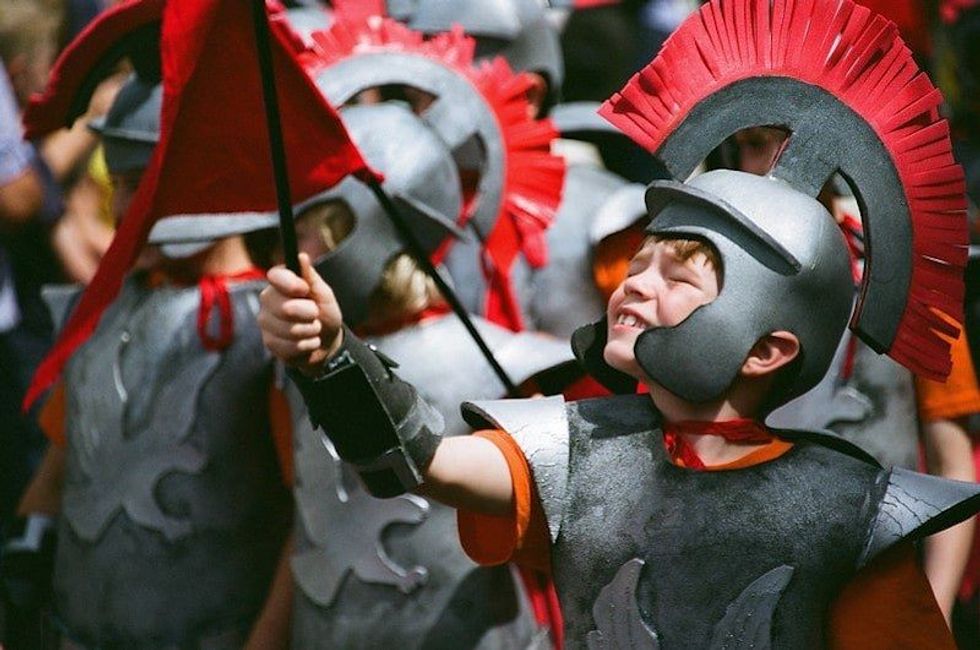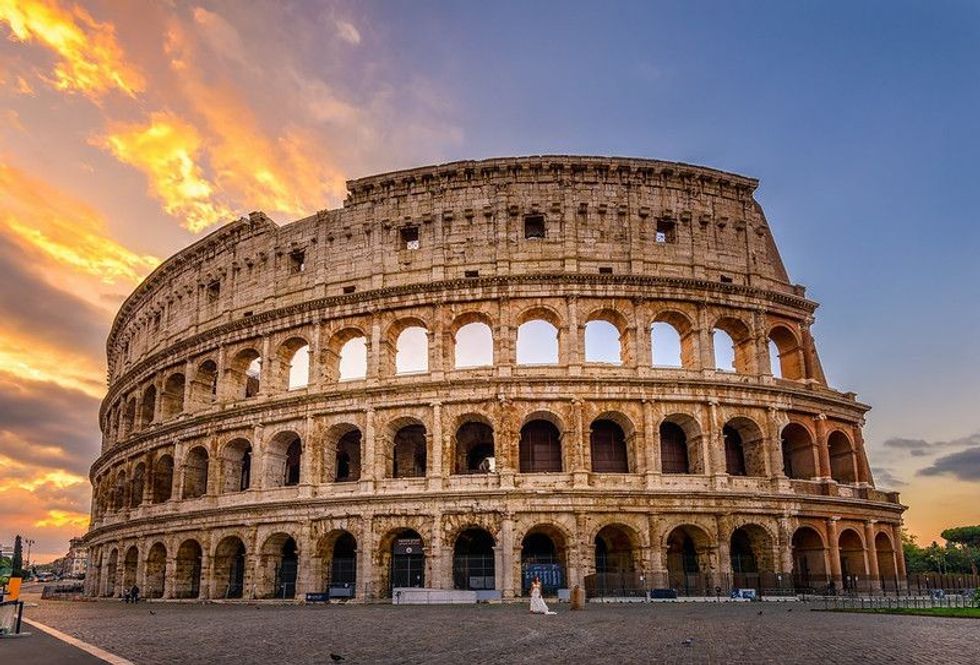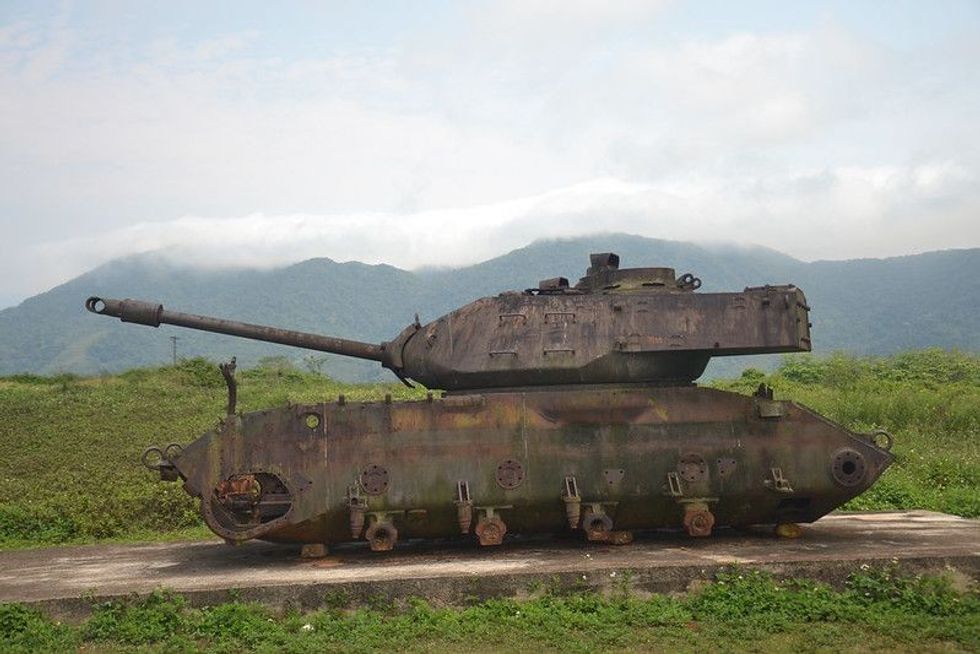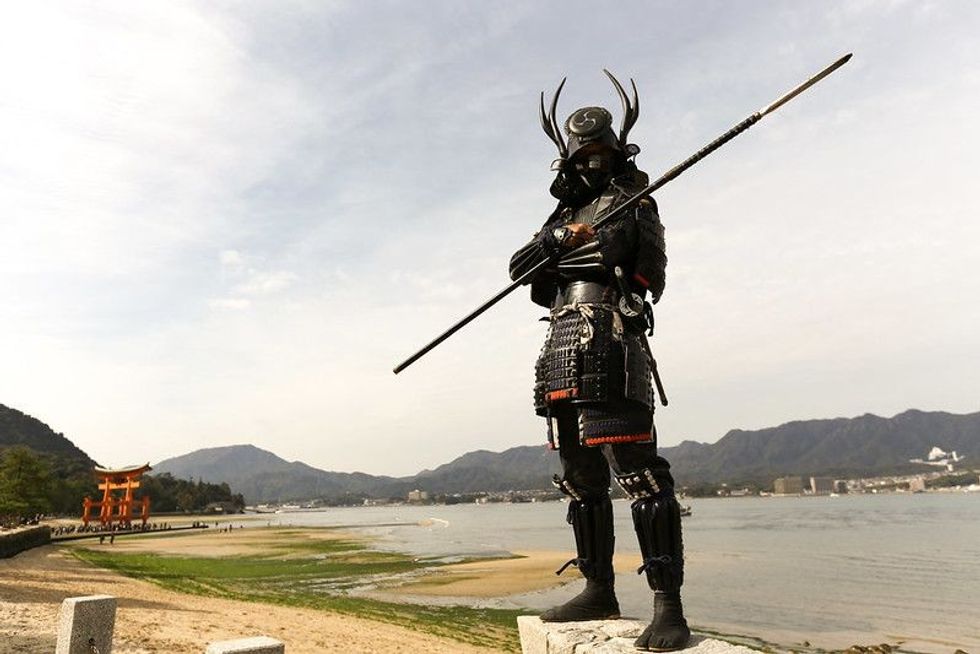Roman soldiers, also known as legionaries, played a crucial role in the expansion and maintenance of the Roman Empire. These soldiers were the backbone of the Roman army, fighting to extend Rome's borders and protect their homeland. Understanding the life, duties, and challenges faced by these ancient warriors provides an interesting perspective on history.
From learning about their rigorous training methods, their formidable armor and weaponry, their living conditions, and their unique battle strategies, kids can gain a comprehensive understanding of what it took to be a Roman soldier.
Additionally, the Roman soldier's influence on Roman society and civilizations beyond Rome's borders provides a broader context for students to study these soldiers not only as warriors but also as influencers of culture, technology, and government during Roman times.
This remarkable blend of historical facts and engaging storytelling offers a perfect opportunity for kids to step back in time and discover the heart of the Roman military machine, fostering a deeper appreciation for history and ancient civilizations.
Interesting Facts About Roman Soldiers
Welcome to an exciting journey into the world of Roman soldiers, designed especially for budding historians and young learners with a fascination for Ancient Rome.
In this resource, you'll discover a captivating collection of facts about Roman soldiers, from their legion structure and formidable weapons to their rigorous training methods and battle tactics. You'll also gain insights into the everyday lives of these soldiers beyond the battlefield.
The goal is to spark your interest in history while providing an engaging exploration of what made the Roman Legions one of the most formidable forces in ancient times.
- The Roman Legion was the biggest part of the Roman army, with each legion as much as 4,200 men, expanding to 5,000 men in times of particular peril. They were mostly made up of Roman citizens.
- Auxiliary soldiers were known as the Roman Auxiliaries. These were often made up of non-Roman citizens. They didn't have as many privileges but were granted Roman Citizenship after serving for 25 years.
- A Roman Centurion was a high-ranking soldier in the Roman Legion who was in charge of 80 to 100 soldiers, while a Decurion was also a high-ranking officer but was in charge of only 30 soldiers.
- The Roman Republic period saw a considerable change in the military system transitioning from a seasonal to a professional standing army. This means that the way the military was organized and operated changed from being a part-time or seasonal force to a full-time, professional army.
- The Legionaries, who were the professional heavy infantrymen of the Roman army, lived a strict military life. They were part of the Roman Legions for 25 years before retirement!
- Did you know that a Roman citizen needed to be at least 1.6 meters tall to be enrolled in the army? They were amongst the tallest soldiers in the ancient world.
- A unique part of Roman life was being part of 'The Legion'. It wasn't just soldiers - it was like a small town traveling together, and it included artisans, architects, and doctors.
- Another fun fact about Roman soldiers is they were not only confined to Italy. The Roman legions and the auxiliaries were spread throughout the empire, from Britain to the Middle East, wherever the Romans conquered.
- In the Roman army, only men were accepted as soldiers, but it wasn't limited to Roman citizens. Non-citizens were also welcome, giving many people an opportunity to serve.
- The standard legionary's wage wasn't much, but the prospect of loot and spoils of war was quite appealing. Old soldiers often retired with enough wealth to live comfortably in their old age.
- During battles, Roman soldiers wore helmets adorned with large crests. These crests were an integral part of their uniform and helped to identify rank and units from a distance.
- After 25 years of service, a Roman legionary was often rewarded with a piece of farmland or money to buy land as a form of pension.
- The Roman army was responsible for some military innovations that helped shape warfare for generations to come. It was such a powerful symbol of Rome’s strength that it became a revered part of the Roman people’s identity.
How did the Roman army fight?

The Roman army was a formidable force, and its strategies and tactics played a huge role in the expansion of Imperial Rome. Its notable discipline and strategic brilliance not only helped it conquer vast territories but also defended them effectively.
Understanding how the Roman army fought requires an understanding of their organization, the weapons they used, and the sophisticated military tactics they implemented.
- The Roman army fought in a tight formation. This was a classic military tactic in which many soldiers lined up to create a dense and strong wall, making it harder for enemies to attack.
- While the Roman army was famous for its tight formation, they were also adaptable. They could quickly change formations depending on the situation. For instance, they could transition from a dense line formation to a more flexible formation, allowing for greater mobility and tactical advantages.
- Julius Caesar, one of Rome's most famous leaders, was known not just for his political expertise but for his skills on the battlefield as well. He leveraged the efficiency and discipline of his army to conquer many territories.
- The Roman army was well known for its 'heavy infantry' - soldiers who fought in close formation with large shields and short swords.
- The Roman army was skilled in siege warfare. They used a variety of ingenious machines and tactics to lay siege to enemy cities and fortifications, often constructing 'ballistae' and catapults to breach walls.
The Roman Soldier Training
Roman soldier training was one of the most grueling processes in the old times, designed to create an unbreakable legion ready for battle. Training involved relentless physical drills, weapon handling, and learning a wide range of combat formations.
Becoming a Roman soldier wasn’t just about mastering combat skills; it was also about instilling fortitude and a relentless drive for victory. This section will offer insights into the rigorous training regimen of Roman soldiers.
- To prepare for war, the soldiers trained with wooden swords, a practice that other countries also adopted. This was a safe way to learn and master the skills of combat without any risk of injury.
- In Roman times, a Roman soldier's training was incredibly rigorous. The typical Roman soldier spent hours each day, in fact, most of his time training to become a well-trained warrior.
- The Roman soldiers spent long periods of training that included marching 20 miles a day and then practicing battle with wooden swords while wearing heavy armor. This routine not only toughened the soldiers but also acted as a preparation for long marches during wartime.
- During the first century, the Roman soldiers used to practice in tight formation, an effective strategy meant to intimidate the enemy.
- Soldiering wasn’t just about fighting. Roman soldiers had to be able to march long distances, often undertaking a long day's march with their own equipment. Apart from their weapons, they also carried cooking pots and other essentials for survival.
- During wartime, a Roman soldier was supposed to build bridges, establish camps, cook, and fight - all in a day's work!
- The Roman Empire's military force wasn't just heavy infantry. The Roman Army also included a well-trained cavalry that assisted in battles.
- During the later centuries, the Roman soldiers were separated into three lines of heavy infantry: the Hastati, Principes, and Triarii, with young soldiers in the front and the older, more experienced soldiers in the back.
- Over centuries, the Roman army's training methods evolved, but the emphasis on discipline, physical fitness, and team cohesion remained a constant reality from the times of the early Roman Kingdom to the later Empire.
What were Roman soldiers called?
If you've ever been curious about the formidable forces of the Ancient Romans, you'll have wondered what the Roman soldiers were called. These brave men were the backbone of one of the most powerful empires in history and had different designations based on their roles and ranks on the battlefield.
Their names, roles, and structure within the Roman military provide fascinating insights into how this grand army functioned and influenced different civilizations.
- The Roman army was divided into semi-independent groups known as legions. Each legion was comprised of around 5,000 Roman legionaries who were all full Roman citizens.
- A Roman Legion of about 5,000 soldiers were divided into groups of 80 to 100 soldiers, known as centuries. The term 'century' comes from the Latin word 'centuria', which means 'group of a hundred'.
- The soldiers in these centuries were led by a centurion. A centurion was a distinguished commander and leader, respected by the Romans and feared by the enemy. This title holds its roots in the term 'century'.
- The most elite soldiers of the Roman army were the Praetorian Guard. They served as the personal bodyguards to the Emperor.
- Soldiers of the Roman cavalry, the horseback division of the Roman army, were called Equites. They were typically wealthy citizens, as they were required to provide their own horses for service.
The Roman Legionary's Equipment
The equipment of a Roman legionary was integral to his effectiveness as a soldier and survival in battle. Their gear showcased the strategic brilliance of the Romans.
Consisting of a range of protective wear, superior weapons, and essential personal items, every piece was precisely designed for maximum operational readiness and reflected the Empire's military might. This section these fascinating artifacts of Roman warfare history.
- Roman soldiers, or legionaries, wore segmented plate body armor known as 'lorica segmentata'. Each set was made up of around 100 metal strips, designed to overlap and give the soldier excellent protection with good mobility.
- Roman soldiers were often responsible for making their own equipment, and unlike the general misconception, it wasn’t just issued to them. This was part of their training and ensured they knew exactly how to repair and maintain their gear.
- Giant catapults and large crossbows were commonly used by the Roman army in warfare. The machines could send a volley of projectiles over great distances, wreaking havoc on the enemy’s lines.
- Each Roman legionary had a curved oval shield called a 'scutum'. The Roman shields, which could absorb the impact of swords and other weapons, were one of the major reasons Roman legions were so successful in battle.
- Roman legionaries wore a particular type of sandal called a 'caliga', designed to be comfortable over long marches. These sandals were open, much like modern-day sandals, to allow the feet to breathe.
- Soldiers' helmets, known as 'galea', were not just for protection; they were often adorned with plumes or other decorations. Superior officers wore plumes vertically on their helmets to be easily identified.
- The Roman people used the term 'gladius' to refer to their primary weapon, a double-edged sword of Spanish design. This gladius was employed for stabbing rather than slashing, owing to its short length
- Each legionary also carried two 'pila', (singular 'pilum') or javelins. These had a particularly deadly feature: their tips were iron and designed to bend upon impact, preventing the enemy from throwing them back.
- They also had a utility tool more like a modern-day Swiss Army knife known as a 'pugio', a short dagger used for close combat and various day-to-day tasks, such as cutting food or wood.
- Legionaries carried their personal kit and up to two weeks' worth of food in a pack on a T-shaped pole known as a 'furca'.
- Each Roman soldier was expected to set up their own tents for camp, made from leather or heavy cloth, displaying a level of self-reliance not common in many other armies at the time.
Roman soldiers were highly disciplined, well-armed, and trained to perfection, making the Roman Empire one of the most powerful forces of ancient times. While their strict lifestyle and rigorous training program were tough, these challenges carved the Roman soldiers into fierce warriors.
The sense of brotherhood and duty must have been strong among them. So, why not pick up a couple of books and explore more about Roman history? You'll never know what interesting treasures you could uncover!









